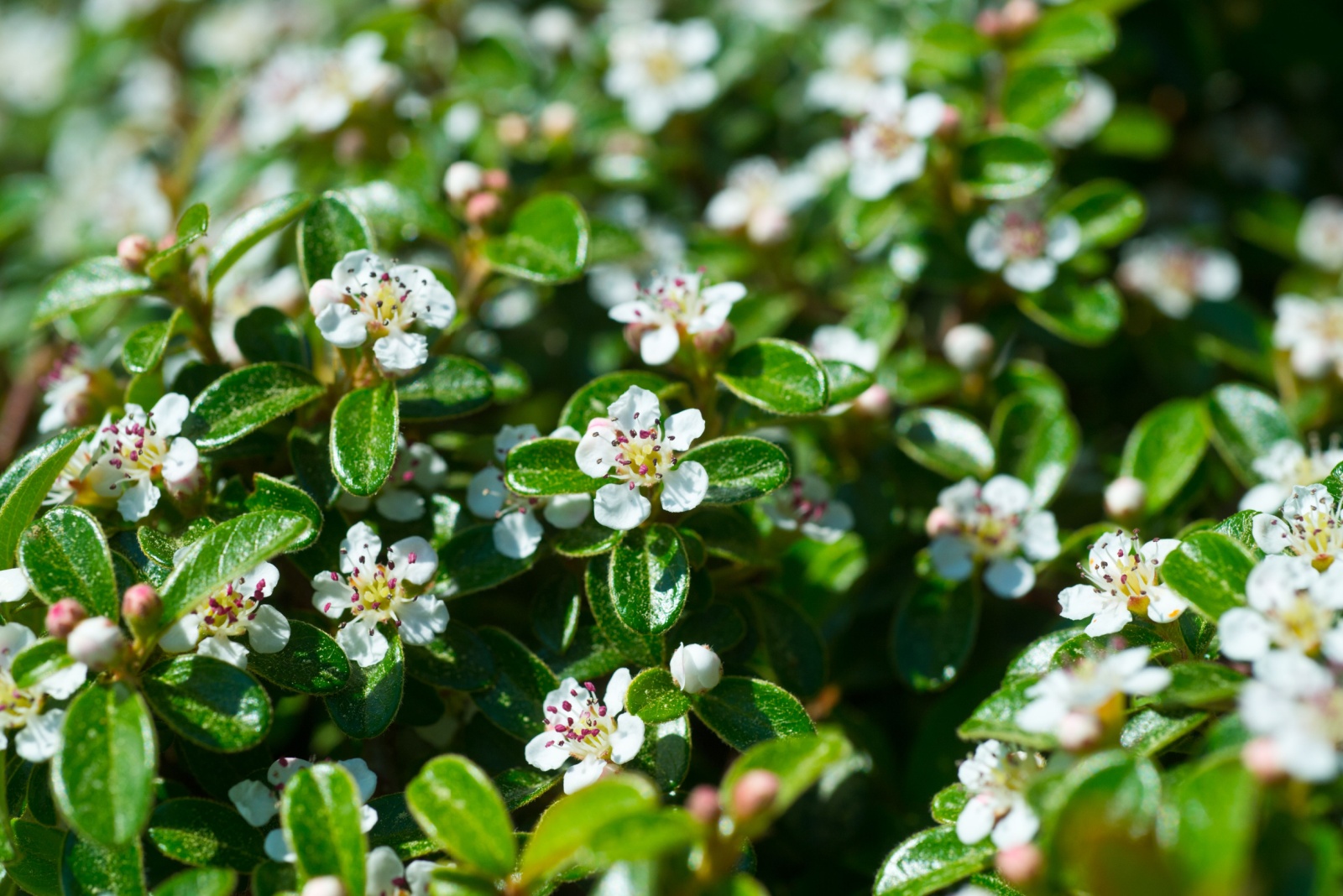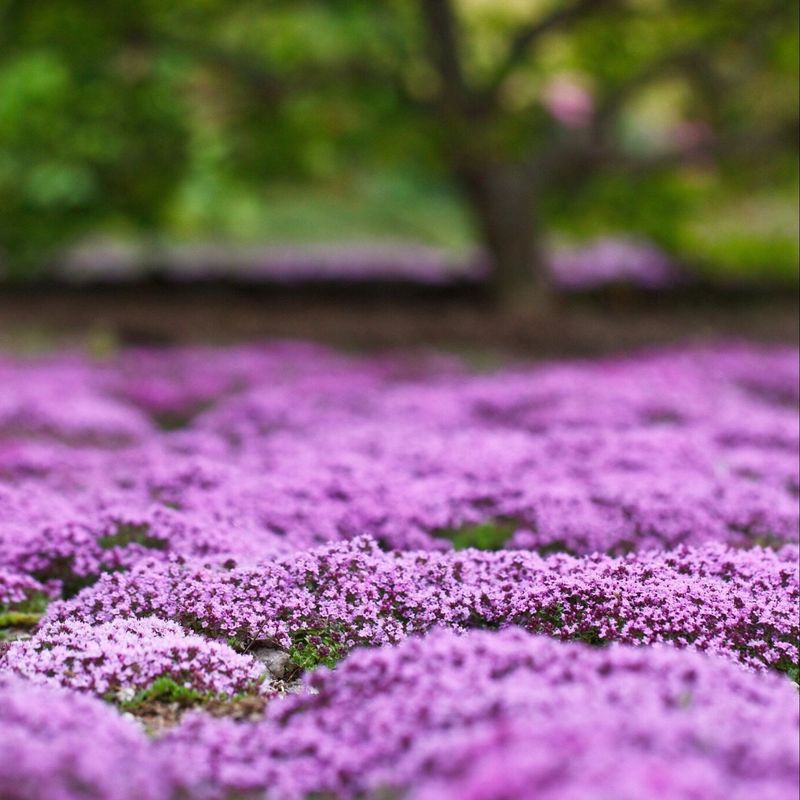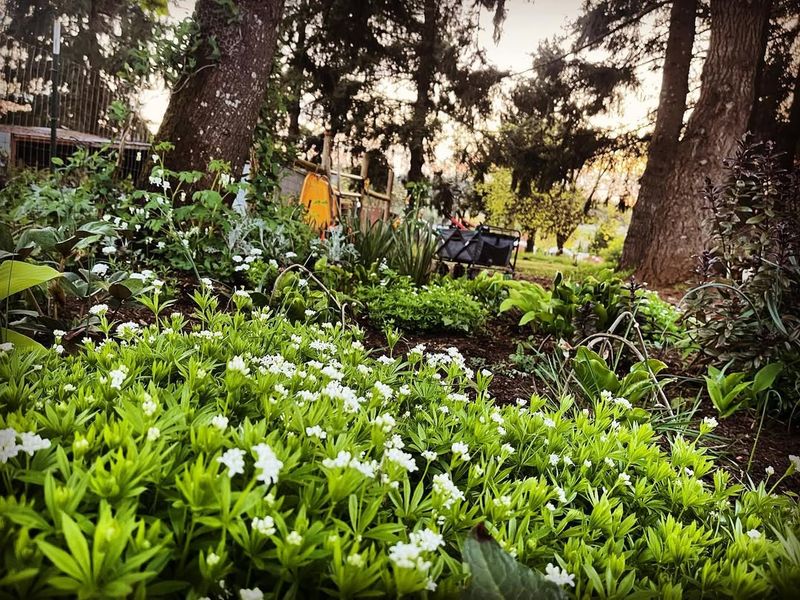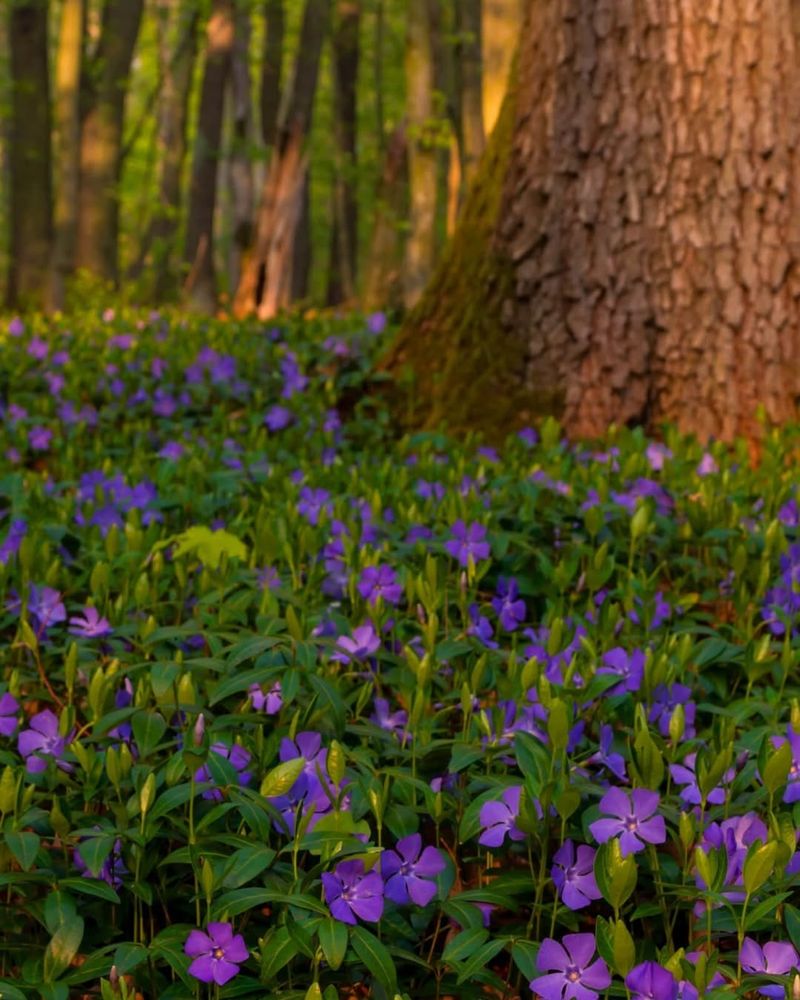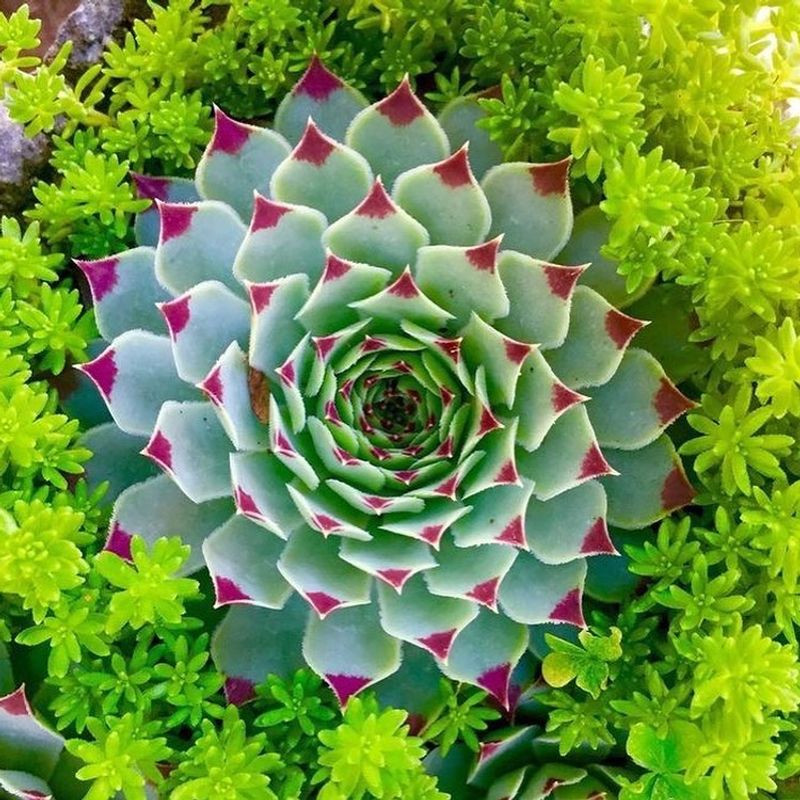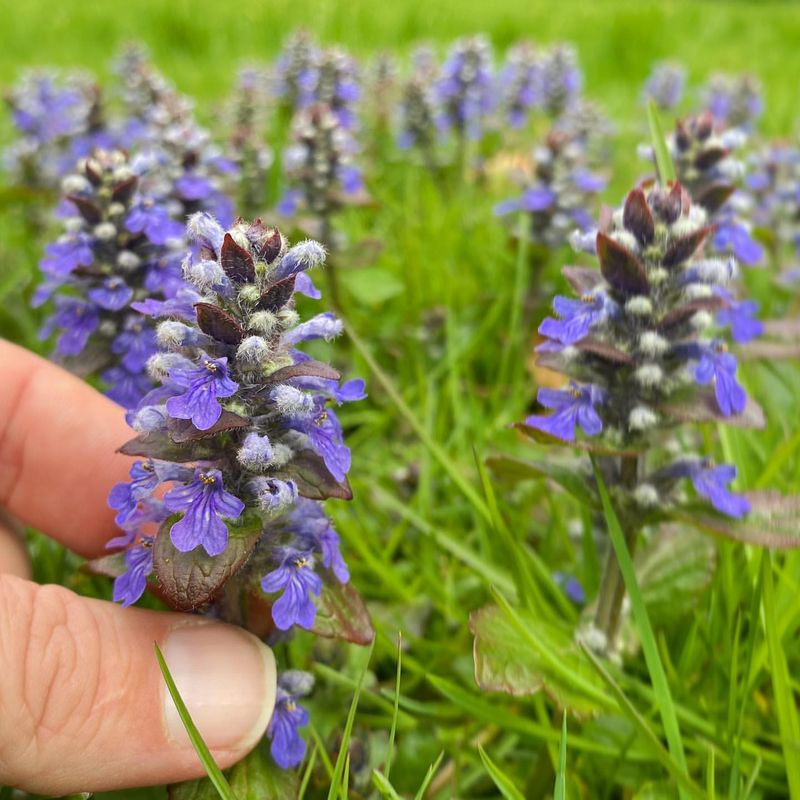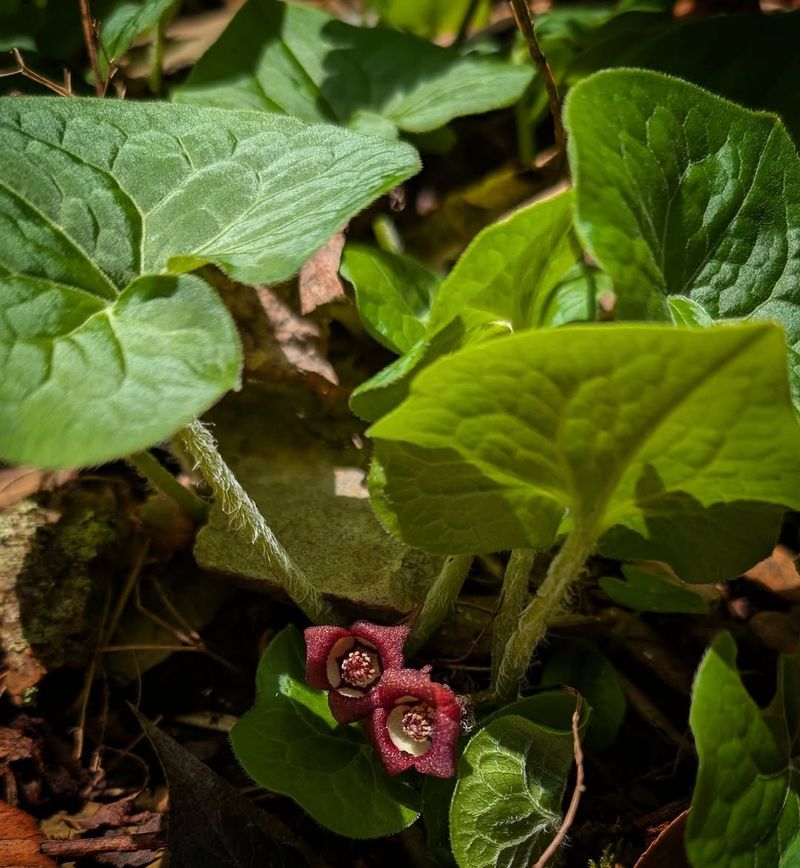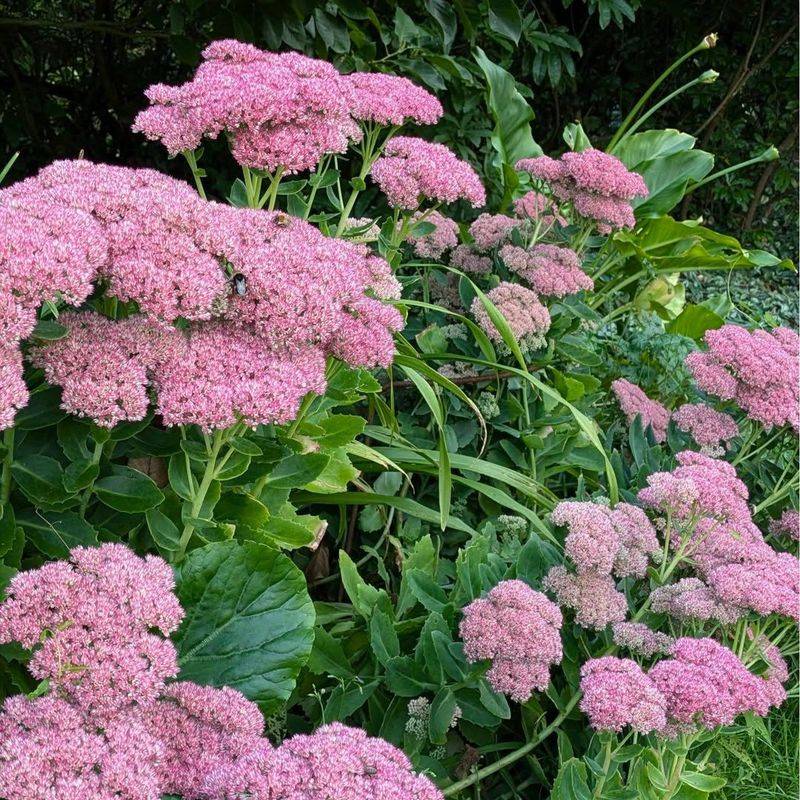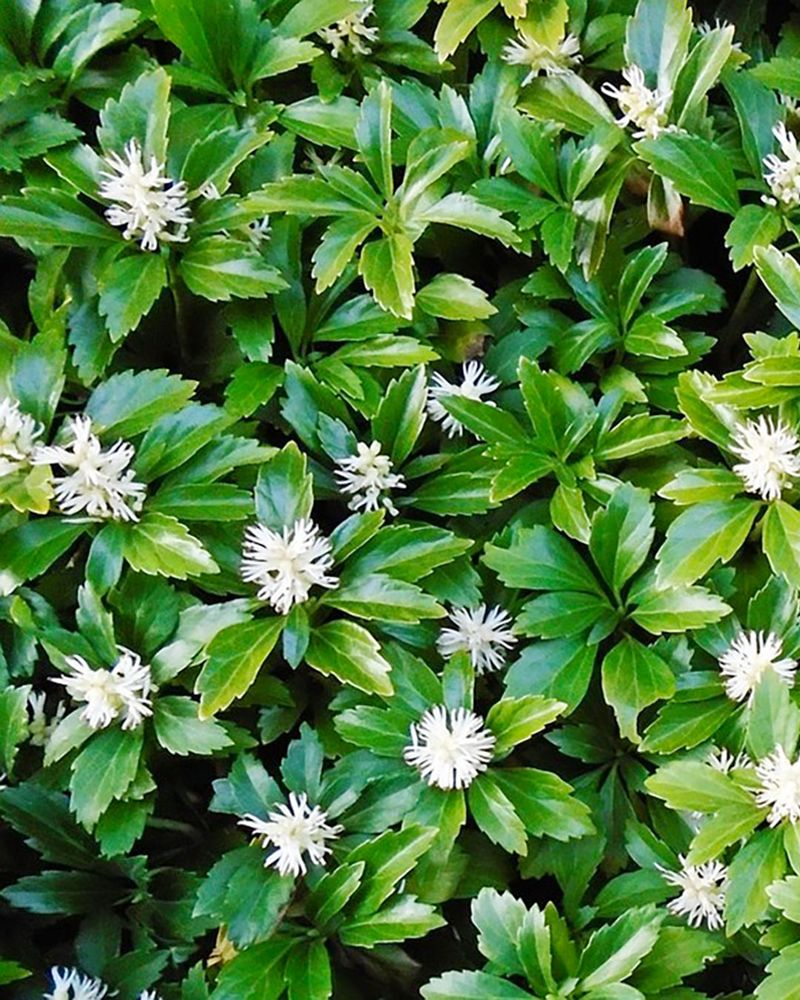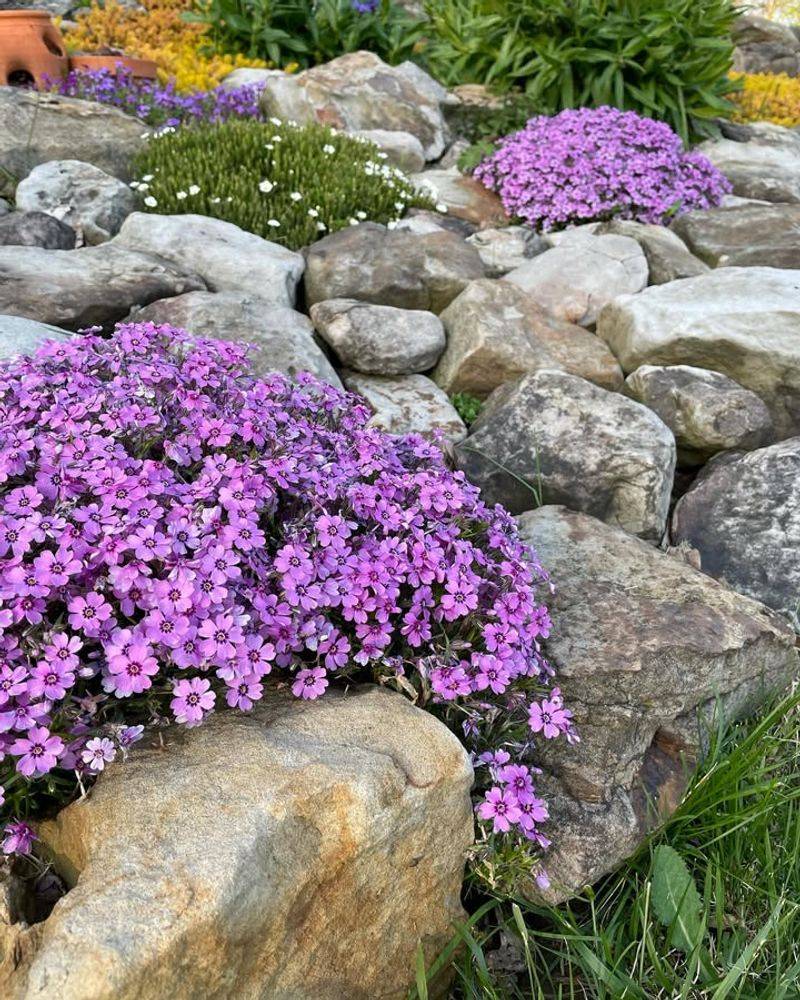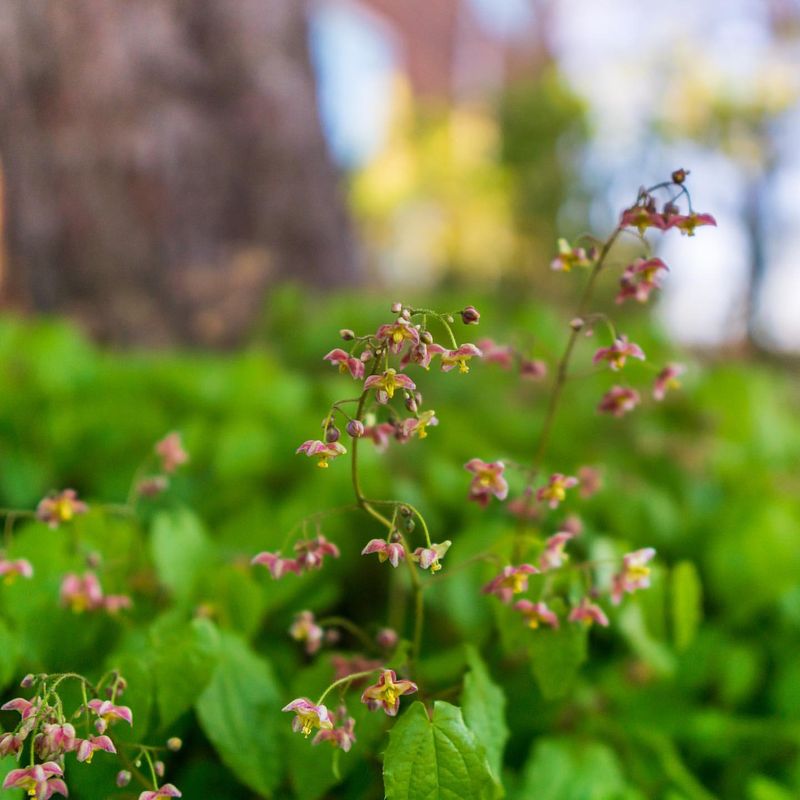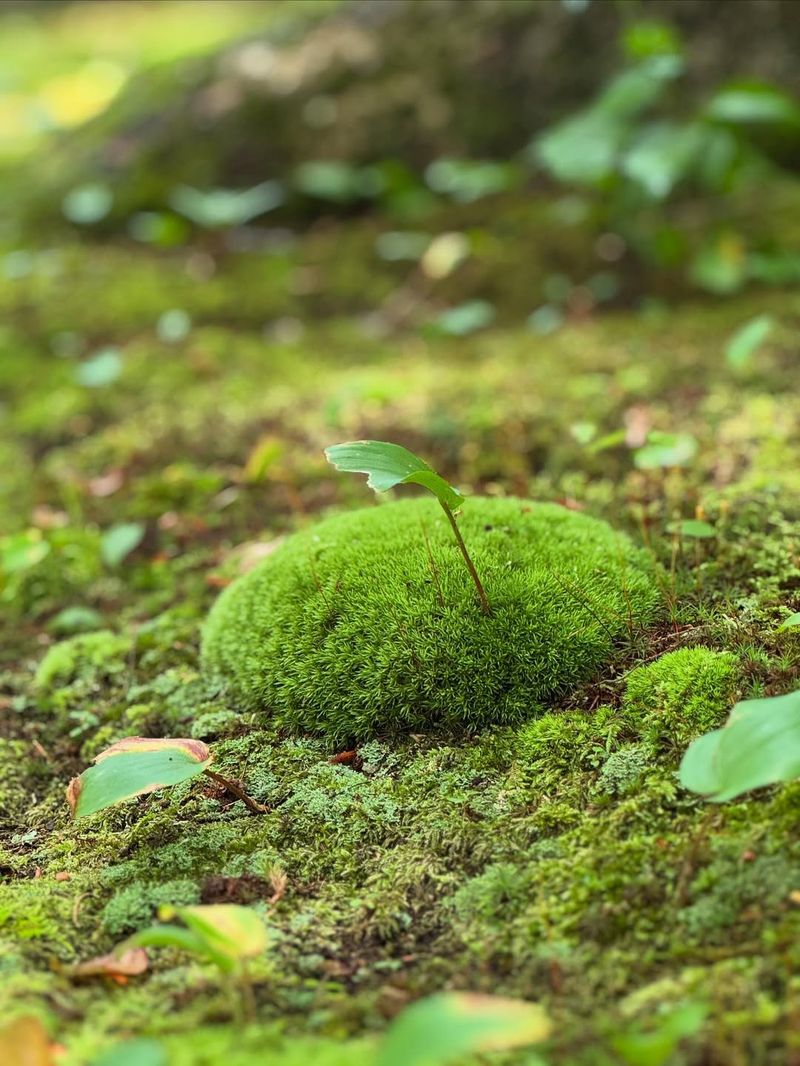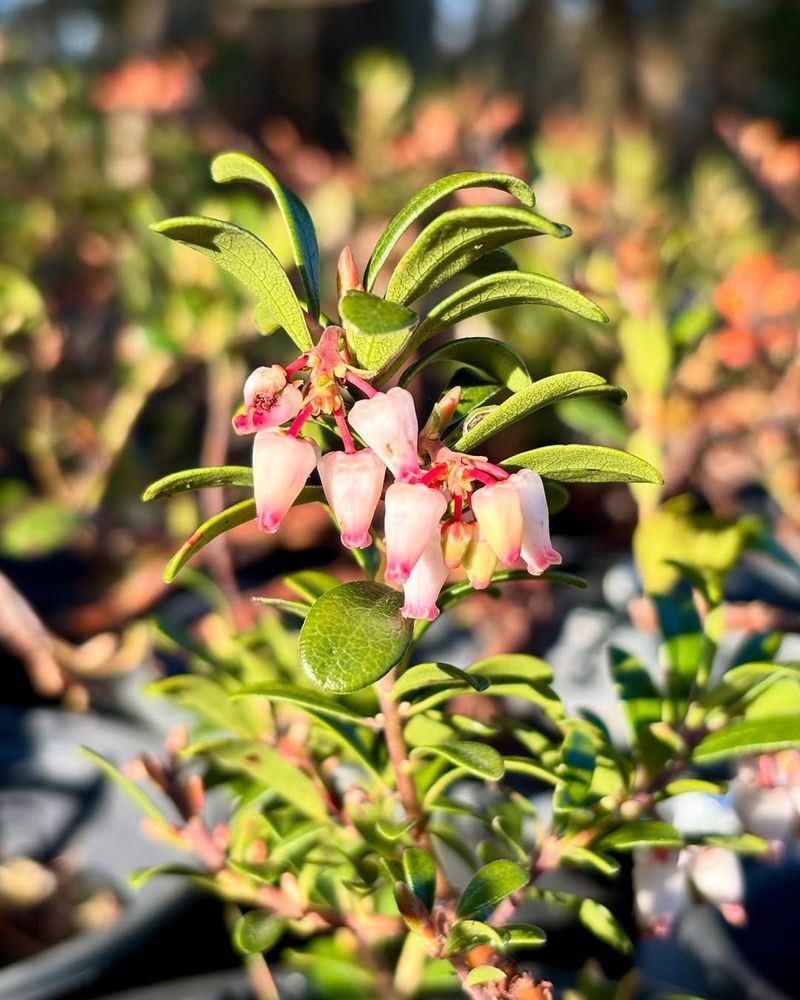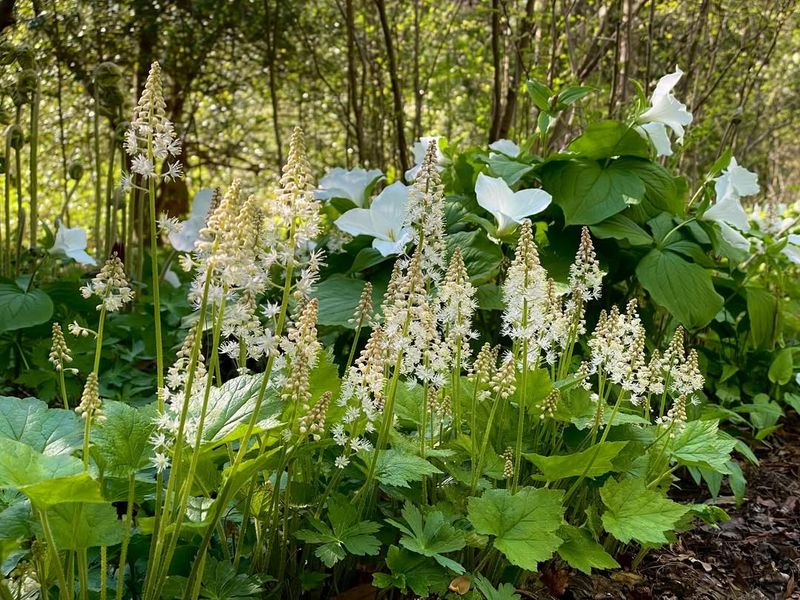Tired of those empty patches ruining your garden’s look? Ground covers are the perfect solution for filling bare spots while adding beauty and function to your New York garden. They prevent soil erosion, reduce weeds, and create a lush carpet of greenery that ties your landscape together.
From sun-loving varieties to shade champions, here are the best ground covers that thrive in New York’s challenging climate.
1. Creeping Thyme
Fragrant and tough, creeping thyme creates a stunning carpet of tiny flowers that pollinators adore. When stepped on, it releases a pleasant herbal scent that’ll make your garden walks more enjoyable.
This low-growing perennial only reaches about 3 inches tall but spreads quickly to cover bare patches. Hardy enough to handle New York winters, it thrives in full sun and well-drained soil.
2. Sweet Woodruff
Dappled woodland gardens come alive with sweet woodruff’s delicate star-shaped white flowers in spring. The whorled leaves form an attractive green mat that smells like fresh hay when dried.
Perfect for those tricky shaded spots under trees where grass refuses to grow. Once established, it’s remarkably drought-tolerant despite its delicate appearance. Spreads steadily without becoming invasive in New York gardens.
3. Vinca Minor (Periwinkle)
Glossy evergreen leaves make vinca minor a standout even when it’s not flowering. Come spring, the periwinkle blue blossoms create a magical carpet that can transform bare spots into showstoppers.
Extremely adaptable to both sun and shade, this tough plant handles New York’s winter chill without complaint. Particularly useful on slopes where erosion is a concern. Just keep it away from natural areas where it might escape.
4. Hens and Chicks
Rock garden enthusiasts rejoice! Hens and chicks create living sculptures with their fascinating rosette patterns. The mother plants (hens) produce numerous offsets (chicks) that cluster around the base.
Drought-tolerant and practically indestructible, they’re perfect for sunny, well-drained spots. Their succulent nature helps them survive New York’s occasional dry spells. Available in various colors from green to purple, they add year-round interest.
5. Ajuga (Bugleweed)
Morning sun transforms ajuga’s purple-blue flower spikes into beacons for early spring pollinators. The colorful foliage, often in deep burgundy or variegated patterns, provides interest even when not blooming.
Rapidly spreading by runners, ajuga quickly fills bare spots in partially shaded areas. Handles New York’s clay soils with ease and stays evergreen through mild winters. Its dense growth effectively smothers weeds, saving you garden maintenance time.
6. Wild Ginger
Native to New York’s woodlands, wild ginger brings authentic local character to shaded gardens. Heart-shaped leaves create a lush green carpet, while unusual brownish-purple flowers hide mysteriously at ground level.
Moving at a gentle pace, it won’t overrun your garden like some aggressive ground covers. Attracts beneficial insects and provides habitat for native wildlife. The aromatic roots smell similar to culinary ginger when crushed, though they’re not used the same way.
7. Sedum (Stonecrop)
Sedum transforms problem areas into succulent wonderlands! Low-growing varieties spread into living carpets that change colors with the seasons – often green in spring, vibrant in summer, and reddish in fall.
Thriving in poor soil where other plants fail, sedum is perfect for sunny, dry spots in your New York garden. Drought-resistant and winter-hardy, these succulents require almost no maintenance once established. Pollinators flock to the tiny star-shaped flowers.
8. Pachysandra
Gardeners with deep shade rejoice – pachysandra creates a lush evergreen carpet where most plants struggle. Glossy, serrated leaves form dense mats that effectively suppress weeds and prevent soil erosion.
Small white flower spikes appear in spring, adding subtle interest. Remarkably tolerant of New York’s urban conditions, including pollution and poor soil. Once established, it requires minimal care and maintains its attractive appearance year-round.
9. Creeping Phlox
Spring gardens burst into vibrant life when creeping phlox unfurls its blanket of pink, purple, or white flowers. The blooms are so profuse they nearly hide the needle-like evergreen foliage beneath.
Happiest in full sun with good drainage, this native plant cascades beautifully over walls or slopes. Tough enough to handle New York’s variable weather conditions, it remains semi-evergreen through winter. Hummingbirds and butterflies can’t resist its nectar-rich flowers.
10. Epimedium (Barrenwort)
Known as the perfect plant for dry shade, epimedium solves one of gardening’s toughest challenges. New spring foliage emerges with beautiful reddish tints before maturing to green, while delicate fairy-like flowers dance above the leaves.
Remarkably drought-tolerant once established, it competes successfully with tree roots. Deer and rabbits typically avoid it, making it ideal for New York’s woodland gardens. The heart-shaped leaves form an attractive mat that suppresses weeds effectively.
11. Moss
Transform shady, moist areas into enchanted woodland scenes with velvety moss. Unlike most plants, moss absorbs water and nutrients directly through its leaves rather than roots, creating a uniquely soft carpet.
Perfect for areas too damp and shady for other ground covers. Once established, moss requires minimal maintenance and stays green year-round in New York gardens. Walking on moss gardens creates peaceful, zen-like spaces that feel magical after rain.
12. Bearberry (Arctostaphylos uva-ursi)
Native to New York’s coastal regions, bearberry creates a stunning display of tiny white-pink flowers in spring followed by bright red berries that persist through winter. The leathery, evergreen leaves take on bronzy-purple tones in cold weather.
Remarkably salt-tolerant, it’s perfect for gardens near roads that get winter salt treatment. Thrives in sandy, poor soils where other plants struggle. Birds love the berries, making this ground cover as wildlife-friendly as it is beautiful.
13. Foamflower (Tiarella)
Delicate spires of frothy white flowers rise above attractive maple-shaped leaves, giving foamflower its charming name. Native to New York’s woodland areas, it brings authentic local character to shaded gardens.
Semi-evergreen leaves often develop beautiful burgundy markings, especially in cooler weather. Spreads slowly by runners to form gentle colonies that won’t take over your garden. Pairs beautifully with ferns and other woodland plants for a natural-looking ground cover in shady spots.

